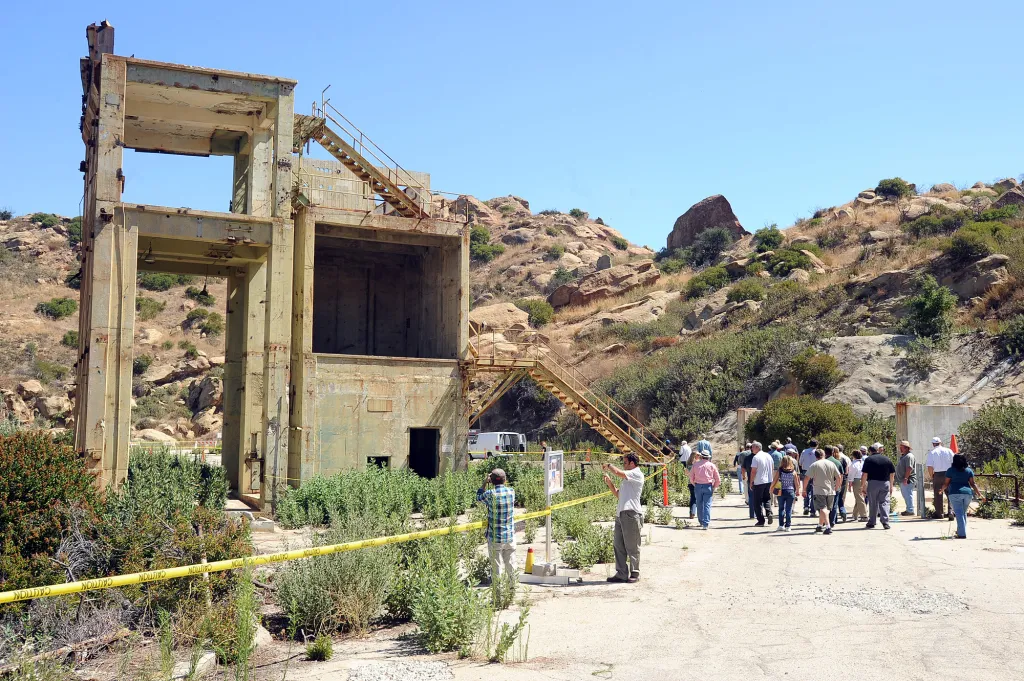Los Angeles County, California – A toxic waste site in the Greater Los Angeles area is under scrutiny as evidence mounts linking its contamination to increased cancer rates among residents, particularly children. Critics argue that political leaders bow to corporate interests, specifically those of the Boeing Company, which owns a significant portion of the site, thus hindering proper cleanup efforts.
The Santa Susana Field Lab, or SSFL, a 2,850-acre site, has a troubled history dating back to 1949. Used for various purposes, including experimental nuclear work, rocket engine tests, and toxic metals research, the SSFL has seen its share of hazardous accidents, including a partial nuclear meltdown. Despite its closure in 2006, the site remains one of California’s most contaminated areas, with toxic waste spreading and endangering local water sources, including the Los Angeles River and the Calleguas Creek Watershed.
The contamination has proven severe, with over 800,000 gallons of trichloroethylene, or TCE, a known carcinogen, found in the soil and groundwater. Residents living near the site face alarming health risks. Studies show that areas surrounding the SSFL exhibit breast cancer rates 10-20% higher than the California state average. In some scenarios, researchers warn that up to 90% of individuals consuming produce grown on the site could develop cancer.
Despite the alarming evidence and numerous compensation claims filed by affected families and former SSFL workers, more than 1,500 individuals have received compensation for cancer-related claims. Boeing has resisted calls for a comprehensive cleanup. The company entered a “Settlement Agreement” with the California Environmental Protection Agency, allowing up to 90% of the site to remain contaminated, much to the dismay of residents and activists.
Local governing bodies, including the Los Angeles County Board of Supervisors, Ventura County Board of Supervisors, Los Angeles City Council, and Simi Valley City Council, have faced criticism for failing to hold Boeing accountable for the ongoing contamination and health risks posed to residents. Critics say that Boeing’s political influence has created fear among these bodies, complicating local and state government’s efforts for stricter regulatory actions.
In an ironic twist, Boeing has engaged in greenwashing tactics to deflect responsibility for the SSFL’s toxic legacy. Recently, the company garnered national attention for donating $1 million to wildlife protection efforts, even as it continues to poison the surrounding environment.
Advocates call for immediate action and accountability as the Greater Los Angeles community grapples with the fallout from the SSFL contamination. “No more children should die from the site’s contamination,” they insist. “It’s time to hold Boeing accountable.” The fight for justice continues, but residents remain wary as corporate greed threatens their health and safety.
Works Cited
California Department of Toxic Substances Control. Ca.gov, 2022, dtsc.ca.gov/santa_susana_field_lab/ssflcancerstudyexposureassessment/.
Grover, Joel. “Advocates Fear Radioactive Waste from One of California’s Most Toxic Sites Could Contaminate More Communities.” NBC Los Angeles, NBC Southern California, 20 Apr. 2023, www.nbclosangeles.com/investigations/radioactive-waste-santa-susana-field-lab-cleanup/3139095/. Accessed 6 Aug. 2024.
Impact. “Instagram.” Instagram.com, 2020, www.instagram.com/p/C9fRC8zxrMn/?hl=en&img_index=1. Accessed 6 Aug. 2024.
SUSANA, SANTA. “PARENTS against SANTA SUSANA FIELD LAB.” PARENTS against SANTA SUSANA FIELD LAB, 2017, parentsagainstssfl.com. Accessed 6 Aug. 2024.
